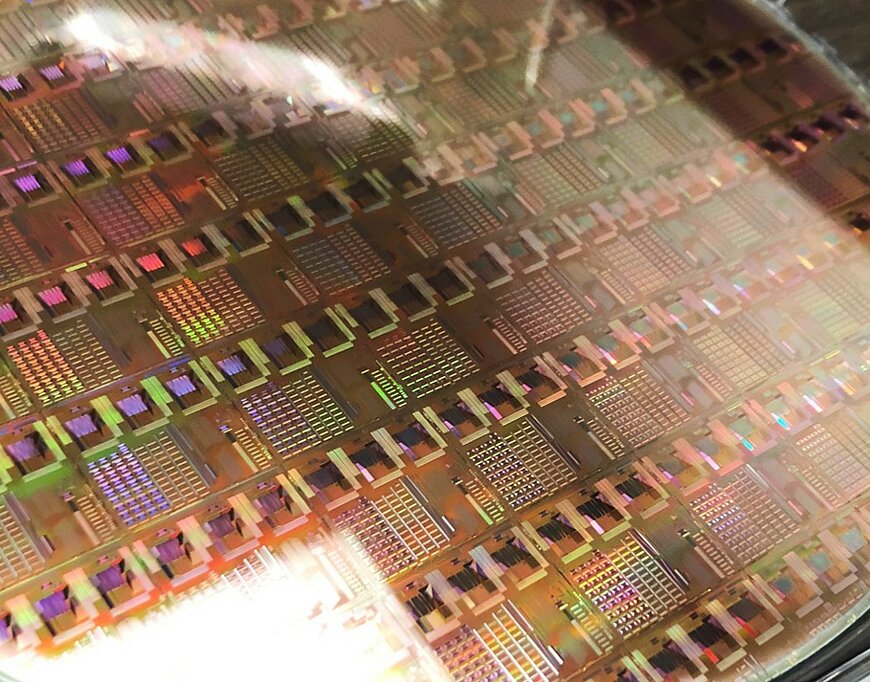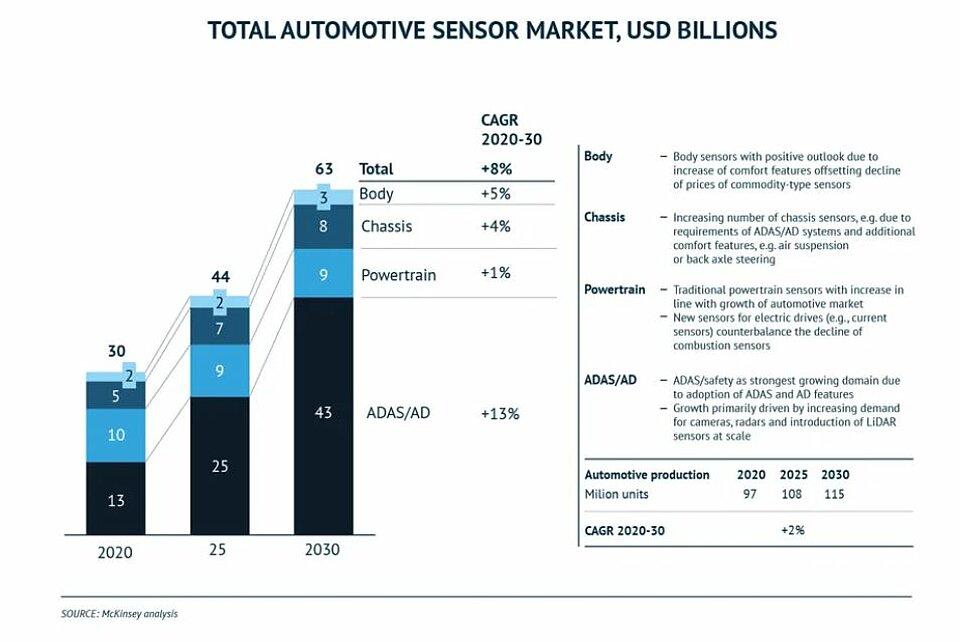The Road Ahead For Integrated Photonics In Automotive
Integrated photonics offers promising solutions in a range of automotive applications.

The automotive industry is going through a rapid transformation driven by electrification, autonomous vehicles & driver support systems, and changes in mobility patterns and city infrastructure. These trends will influence the physical design and capability of commercial, public, and individual vehicles and the broader social and economic impacts of changes to car/fleet ownership and use. The increased need for sensors in vehicles, in the electric/hybrid drivetrains and advanced driver-assistance systems (ADAS) up to autonomous driving systems, creates new significant opportunities for the integrated photonics industry.
Combustion engine vehicles are facing increasing emission legislation demands. This is leading to accelerated innovation in electric vehicles (EV) and a very strong increase of electronics in vehicles in two key areas: Power electronics and sensors in EV and Sensors and computing/networking for ADAS in autonomous vehicles.
Integrated photonics offers promising solutions in both areas. Integrated photonics is the rapidly emerging field of photonics that works to integrate multiple photonic functions into integrated circuits for communication, sensing, and, going forward, computing applications. Complex photonic circuits can now generate, process, and detect light, in analogy to how electronic integrated circuits do for electronic signals by way of connecting multiple discrete single-function components (e.g. dedicated lasers, photodetectors) and relevant optical interfaces.
This article will give an overview of the applications in automotive that hold the most potential for Integrated Photonic potential. Additionally, it will introduce the PhotonDelta Integrated Photonic Automotive roadmap.
Automotive applications with potential Integrated photonic content
As the amount of electronic content in cars continues to increase the potential for PIC also rises rapidly. There is a wide range of applications within the future motor vehicle suitable for PIC.


FMCW lidar and Fiber Bragg Grating Sensors
Two areas with the most potential for PIC are FMCW Lidar and Fiber Bragg Grating interrogators.
FMCW (Frequency-modulated coherent wave) lidar
Lidar is a complementary sensor technology to radar and cameras for ADAS and autonomous vehicles. It works by actively scanning its environment with a laser beam and detecting the return signal to measure distance and speed (for some versions). Different operating principles and many different technical solutions exist, and the technology is developing rapidly under the increased investment from major automotive manufacturers.
FMCW lidar is gaining traction because it can offer higher sensitivity and measure the speed at the same time. This principle is very well suited for using Integrated Photonics. Future electric vehicle designs are expected to host multiple Lidar, particularly vehicles with elevated autonomous driving functions.


FMCW lidar using integrated photonics
The challenge to bringing an FMCW solution to market has been the lack of low-cost, high-volume manufacturing of the required high-performance components. Affordable FMCW lidar solutions require all-optical functionalities to be integrated into a single silicon chip. PIC offers the level of manufacturing control and accuracy needed for integrated circuits to achieve superior performance and the functionality needed to enable a robust, cost-effective, and high-quality product.
A low-noise, low-loss, and polarization-independent technology will enable very high signal-to-noise ratios (SNRs) so even lower optical powers can be used. Thus, even when humans are close to the sensor, it will remain eye-safe for the detection of distant objects. Measuring objects a few centimeters in dimension >200 m away should be within the capability of integrated circuit-based FMCW lidar.
Improvements in lidar bring deliver better driver assist systems and will ultimately be essential to widespread autonomous vehicle design. However, FMCW lidar also has massive potential for use in other types of ‘vehicles’ such as autonomous robots for use in manufacturing, healthcare, and infrastructure monitoring.
Fiber Bragg Grating sensors using integrated photonics
Fiber Bragg Grating (FBG) sensors work on the principle that light is reflected or absorbed in a fiber where on specific positions a frequency tuned grating is made. This is dependent on force, pressure, temperature, and strain, all of which can be simultaneously measured with extreme accuracy.
Most fiber optic sensor systems today make use of FBG technology. FBG-based sensing offers advantages, such as small size, fast response, distributed sensing, and immunity to the electromagnetic field. All attributes relevant to application in automotive. These systems can be miniaturized using integrated photonics into very compact interrogator systems that have multiple applications for electric vehicles.
This miniaturization isn’t just a ‘nice to have' but rather essential for the continued innovation of vehicles to occur. As described above the rapid electrification of all forms of transport means also means more ‘stuff’ is needed inside the vehicles. Wiring, sensors, and processors increase contributing to the vehicle’s overall weight and in turn a reduction in its efficiency. Integrated photonics offers a huge reduction in the overall size of systems. Combined with other communication technologies such as wireless and single pair ethernet, vehicles will get lighter and more efficient.


The future of vehicles
We are at a precipice of change within the automotive industry. Multiple technologies, including integrated photonics, are rapidly coming to maturity that has the potential to radically change the way we understand vehicles. At this moment almost all imagined scenarios could become reality. It will be a complex combination of market demand and adoption, resource management, and imagination that will ultimately decide the outcome.
Integrated Photonic Automotive Roadmap
Dutch growth Accelerator PhotonDelta has created the Integrated Photonic Automotive Roadmap, which provides a clear overview of the automotive industry’s current trends and market conditions and identifies the key opportunity areas for integrated photonics. The roadmap details which technology developments need to occur to support PIC applications and links this with technology roadmaps. Finally, the roadmap proposes an approach for the industry to ensure new applications are not delayed due to roadblocks caused by industry or manufacturing capabilities. Sign up here to receive a notification of the roadmap's official release.
Summary
Integrated photonics opens a wide range of innovation opportunities in automotive. As the electronic components of cars increase and the move to full electrification continue, PIC offers low-power and low-cost solutions that directly contribute to vehicle efficiency. PIC will follow a similar path of decreasing cost as mass manufacturing expands. Future automotive solutions are likely to heavily rely on the advantages of PIC.
Source: Wevolver